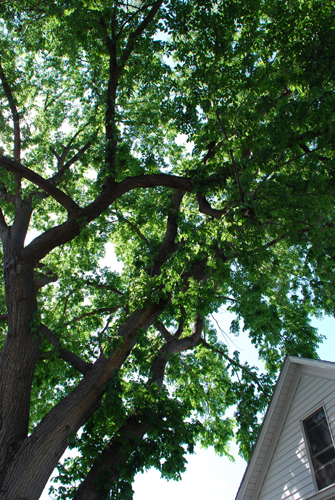
My gigantic American elm tree is dying. My best guess, going by her size and location, is that somebody planted her at about the time he built my house in 1906. That would make her 113 years old.
I’ve noticed for several years that she acted stressed. She kept growng epicormic branches—the twiggy branches that grow along the trunk. Those extra leaves gave her additional food-producing capacity.
Over and over, I noticed a stain on the front sidewalk. It looked like blood and I wondered why some small predator always killed its meals in the same spot. Then I realized the tree was shedding “blood” from a big wound.
It’s hard to tell how long she’s got—maybe a few years, maybe not. My tree survived repeated epidemics of Dutch elm disease, but whatever started her decline, I don’t think she’s going to make it. Because of her apparent immunity, I’ve saved one of her daughters. The baby’s planted where she will one day take over her mother’s job of shading this house.
I’ve been reading that trees communicate and share nutrients, even after death, through complex ecosystems of root fungi. I know that everywhere in my huge double corner lot I find her roots whenever I dig. I’m sure she’s in touch with her daughter. I hope she’s giving the little one a solid start toward a long life.